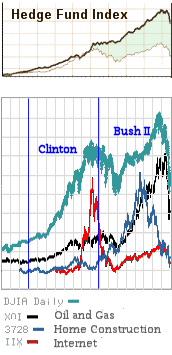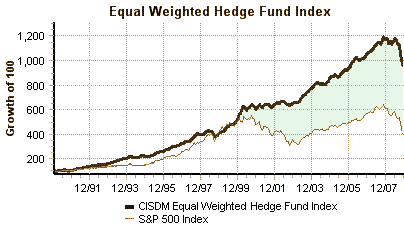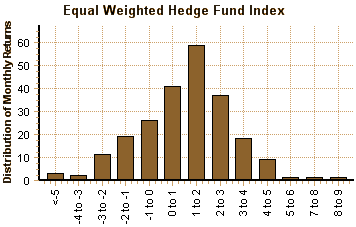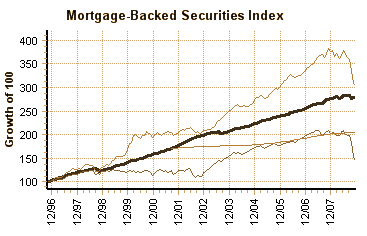 Like most financial markets, Hedge Funds have an index too, just like the Dow Jones Index or the Standard and Poors for the Stock Market. This is the CISDM Index shown compared to the Standard and Poors Stock Market Index [click on the graph for details]:
Like most financial markets, Hedge Funds have an index too, just like the Dow Jones Index or the Standard and Poors for the Stock Market. This is the CISDM Index shown compared to the Standard and Poors Stock Market Index [click on the graph for details]:The CASAM CISDM Equal Weighted Hedge Fund Index reflects the average performance of hedge fund managers reporting to the CASAM CISDM Database. Its objective is to provide an estimate of the rate of return to an equally weighted portfolio of hedge fund managers who trade a wide variety of hedge fund strategies which are based on a wide variety of trading models. The index goes back historically to January 1990.
-
Gramm-Leach-Bliley Act of 1999:
-
Commodity Futures Modernization Act of 2000:
I’ve colored the result in green [appropriately] on the graph. That’s how much the Hedge Fund Managers are able to make by speculating using the "Gramm-Tools," and it’s a hell of a lot [also notice in the figure on the right that the Hedge Funds weren’t affected by the "bubbles" and only fell when everything went south]! Where does it come from, all this "bubble-proof" profit being generated by the Hedge Funds? It comes out of the pool of our money known as "the Market." Where does it go? A big piece of it goes to the Hedge Fund Managers themselves and the rest of it goes to their rich clients – resulting in the dramatic increase in Wealth Inequity.
This is the spread of monthly returns from the Hedge Funds. They average around 12.5%/year [which is one fine rate of return]. One thing to notice is that Bernard Madoff always hit right in the middle, a clear indication that something very fishy was going on. Nobody’s that skilled or lucky. But the other thing to notice is that this is a big return rate, indicating that the "Gramm-Tools" were very effective in the hands of the Hedge Fund Managers.
The CASAM CISDM Mortgage-Backed Securities Index reflects the median performance of mortgage backed securities arbitrage hedge fund managers reporting to the CASAM CISDM Database. Its objective is to provide an estimate of the rate of return to mortgage backed securities arbitrage managers who attempt to take advantage of mispricing opportunities between different types of mortgage backed fixed income securities while neutralizing exposure to interest rate and/or credit risk. The index goes back historically to October 1996.



Sorry, the comment form is closed at this time.